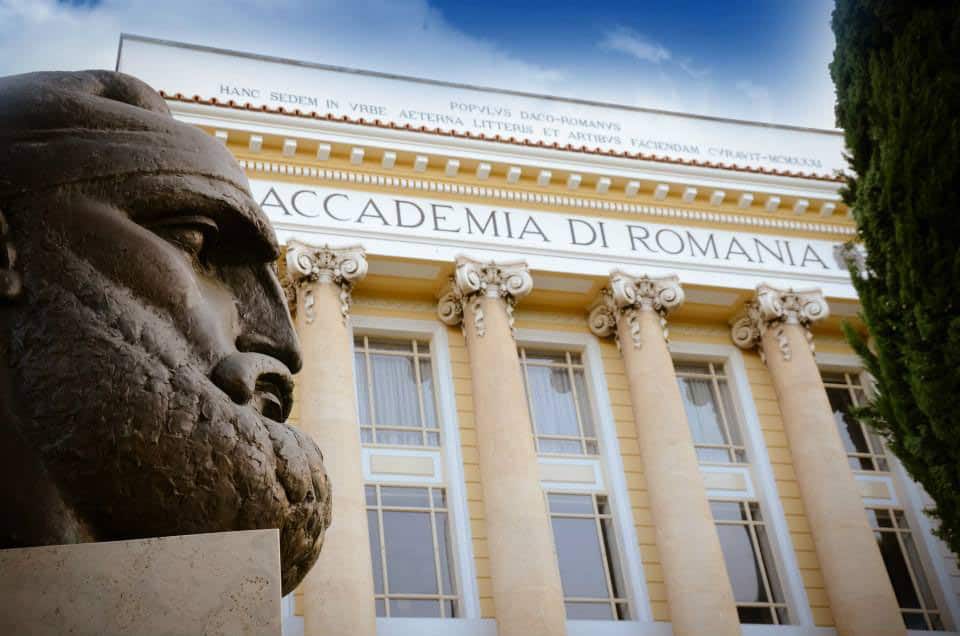One hundred years of Romanian traditions in Rome.
The Romanian Academy in Rome is found atop the Pincian Hill among other foreign academies of the Valley. The villa that houses the institute was constructed by Romanian architect Petre Antonescu. He was known for developing the national neo-Romanian style of incorporating folk architecture and craftsmanship of the olden days with new modern design.
The foundation of the institute dates back to 1920 when the Romanian Parliament approved a law establishing the first Romanian academies abroad: the Romanian School of Fontenay aux Roses in Paris and the School of Rome. Although the School started its activities in 1922, the current location was inaugurated in January 1933 thanks to the contributions of the National Bank of Romania. The school hosted the greatest scholars from Romanian universities until 1947 when the institute temporarily closed its doors, pausing the enriching exchanges between Romania and Italy.

International relations and politics had an impact on the history of the Romanian Academy in Rome.
Only in 1990, after the fall of the totalitarian regime in Bucharest, could the institute resume its mission and take back its role in promoting cultural collaborations in the fields of archaeology, history, and arts.
Besides functioning as a fortress of culture and information, the Academy produces its own annual publications such as the Ephemeris Dacoromana and the Diplomatarium Italicum, which presents a collection of documents about Romanian history and culture collected in Italian libraries and archives.

An Eastern European touch in the Italian Capital
Tightly connected to the Academy, the Romanian Library offers a wide range of resources spanning from history, architecture, arts and Romanian literature. The choice of books has somehow be influenced through the years by the changing political context.
In 1969, about 14.000 publications were imported from the Romanian capital, focusing on disciplines such as philosophy, sociology, economics, law, ethnography and folklore, linguistics and philology, mathematics, physics, chemistry, geophysics, biology etc.
After 1989, the collection underwent further changes, liberating itself from the propaganda literature, as a mark of the totalitarian regime. At present, the collection counts 35.000 volumes, representing one of the largest Romanian libraries abroad.
Other than being a cultural center for Romanians studying in Rome, the Romanian Academy also offers Romanian language courses two hours a week for beginners and intermediates. Along with courses, the academy also hosts various events to help educate others on the richness of Romanian history, art, and culture.
ACCADEMIA DI ROMANIA
Piazzale José de San Martin, 1
Opening Hours
Monday through Friday, 09:00 – 17:00
With the exception of scheduled events, the Academy is closed on Saturdays and Sundays, and also on holidays established by law in Romania.




